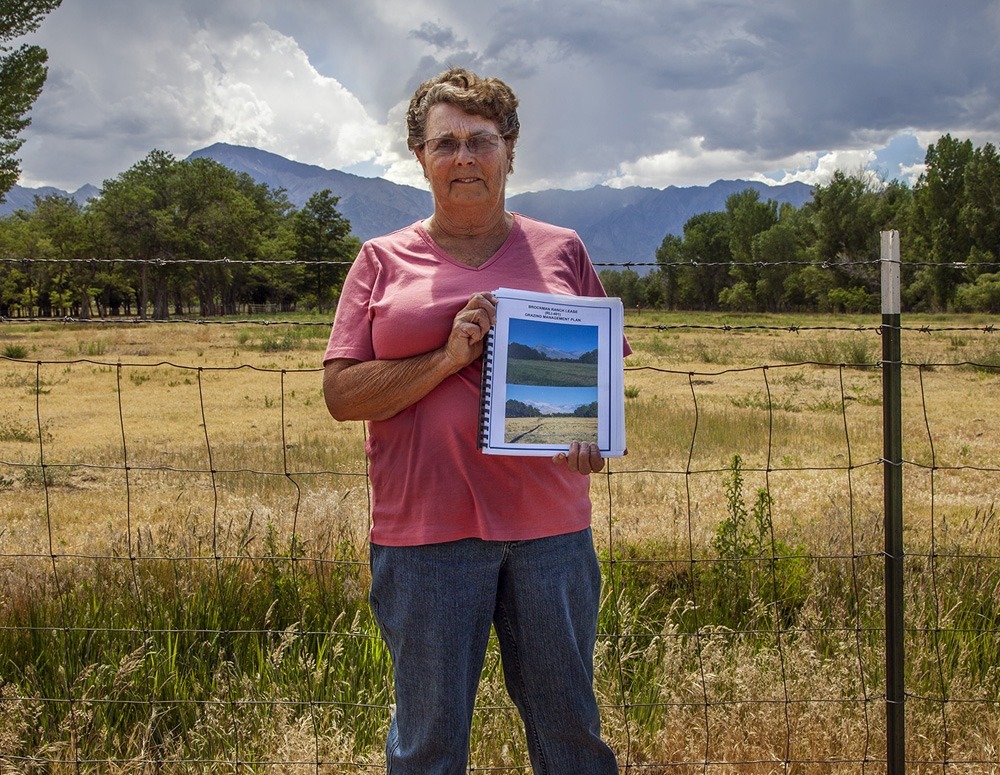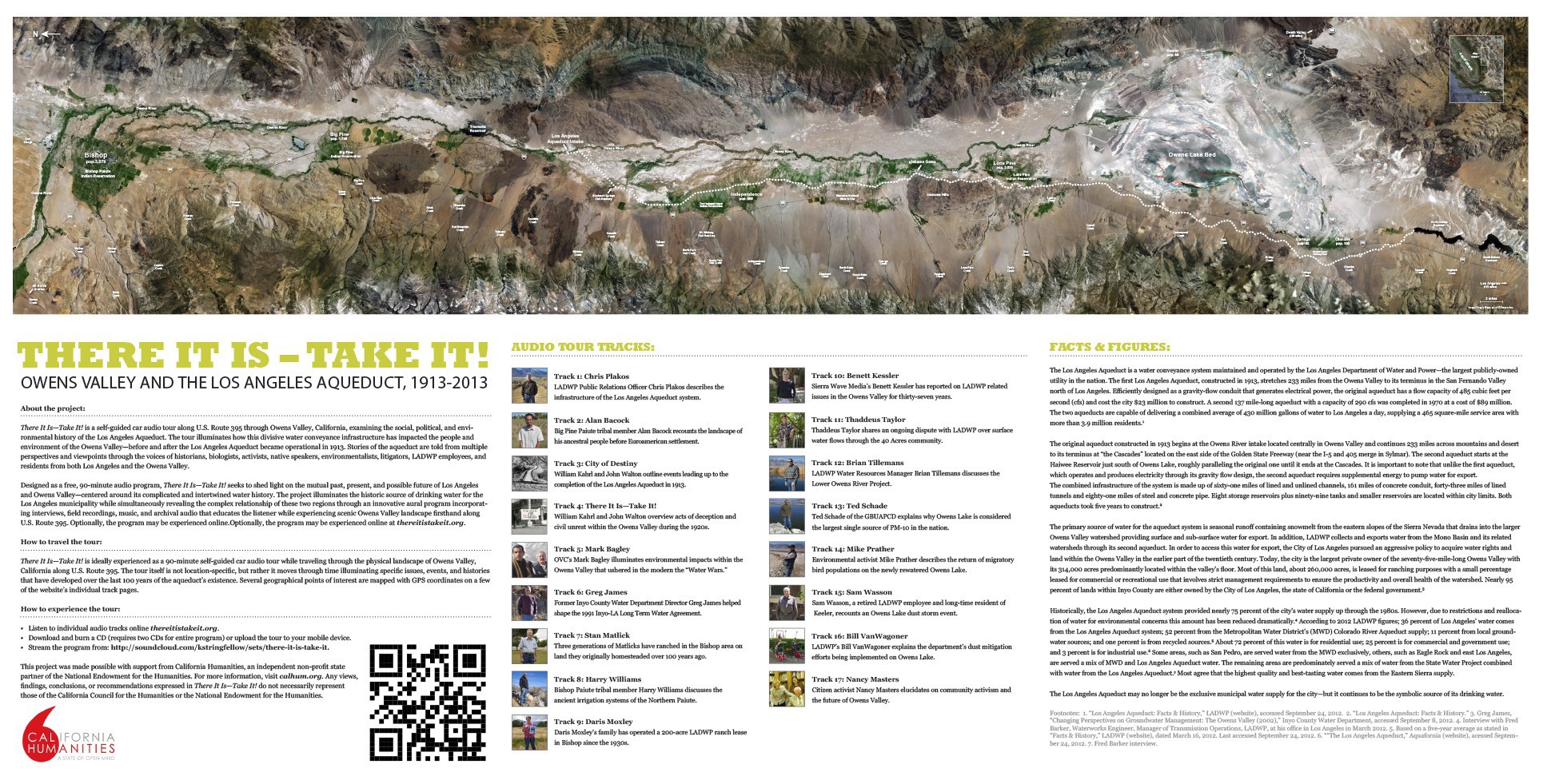Project Website: thereitistakeit.org
Project Dates: 2011-2013
There It Is—Take It! illuminates how this divisive water conveyance infrastructure has impacted the people and environment of the Owens Valley—before and after the Los Angeles Aqueduct became operational in 1913. Stories of the aqueduct are told from multiple perspectives and viewpoints through the voices of historians, biologists, activists, native speakers, environmentalists, litigators, LADWP employees and residents from both Los Angeles and the Owens Valley.
Designed as a free, 90-minute downloadable audio program, There It Is—Take It! seeks to shed light on the mutual past, present, and possible future of Los Angeles and Owens Valley—centered around its complicated and intertwined water history. The project illuminates the historic source of drinking water for the City of Los Angeles while simultaneously revealing the complex relationship between these two regions through an innovative aural program incorporating interviews, field recordings, music, and archival audio that educates the listener while experiencing scenic Owens Valley landscape firsthand along U.S. Route 395. Optionally, the program may be experienced online. A tour map featuring points of interest along the route is available for download.
There It Is—Take It! was launched on Sunday, October 14th, 2012 at a public listening party and panel discussion hosted by the Friends of the Eastern California Museum in Independence, California. There It Is—Take It! was featured in BOOM: A Journal Of California’s Fall 2013 issue and was included in After the Aqueduct (curated by Kim Stringfellow) at LACE (Los Angeles Contemporary Exhibitions) in Hollywood, CA in 2015. Audio production and sound design for this project by Tim Halbur.
This project was made possible with support from California Humanities, an independent non-profit state partner of the National Endowment for the Humanities. For more information visit calhum.org. Any views, findings, conclusions, or recommendations expressed in this program do not necessarily represent those of California Humanities or the National Endowment for the Humanities.
Sample Track







